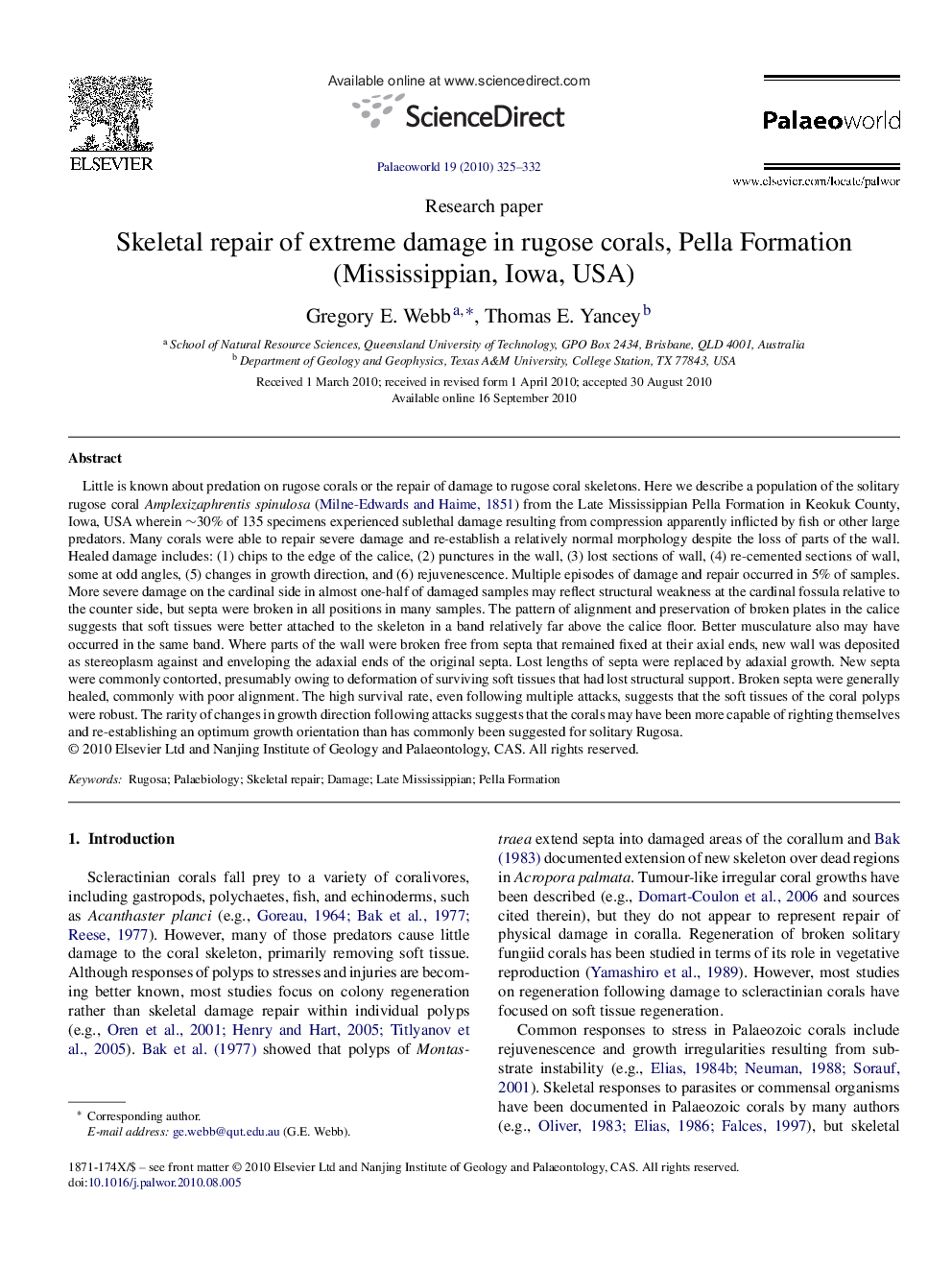| Article ID | Journal | Published Year | Pages | File Type |
|---|---|---|---|---|
| 4749829 | Palaeoworld | 2010 | 8 Pages |
Little is known about predation on rugose corals or the repair of damage to rugose coral skeletons. Here we describe a population of the solitary rugose coral Amplexizaphrentis spinulosa ( Milne-Edwards and Haime, 1851) from the Late Mississippian Pella Formation in Keokuk County, Iowa, USA wherein ∼30% of 135 specimens experienced sublethal damage resulting from compression apparently inflicted by fish or other large predators. Many corals were able to repair severe damage and re-establish a relatively normal morphology despite the loss of parts of the wall. Healed damage includes: (1) chips to the edge of the calice, (2) punctures in the wall, (3) lost sections of wall, (4) re-cemented sections of wall, some at odd angles, (5) changes in growth direction, and (6) rejuvenescence. Multiple episodes of damage and repair occurred in 5% of samples. More severe damage on the cardinal side in almost one-half of damaged samples may reflect structural weakness at the cardinal fossula relative to the counter side, but septa were broken in all positions in many samples. The pattern of alignment and preservation of broken plates in the calice suggests that soft tissues were better attached to the skeleton in a band relatively far above the calice floor. Better musculature also may have occurred in the same band. Where parts of the wall were broken free from septa that remained fixed at their axial ends, new wall was deposited as stereoplasm against and enveloping the adaxial ends of the original septa. Lost lengths of septa were replaced by adaxial growth. New septa were commonly contorted, presumably owing to deformation of surviving soft tissues that had lost structural support. Broken septa were generally healed, commonly with poor alignment. The high survival rate, even following multiple attacks, suggests that the soft tissues of the coral polyps were robust. The rarity of changes in growth direction following attacks suggests that the corals may have been more capable of righting themselves and re-establishing an optimum growth orientation than has commonly been suggested for solitary Rugosa.
